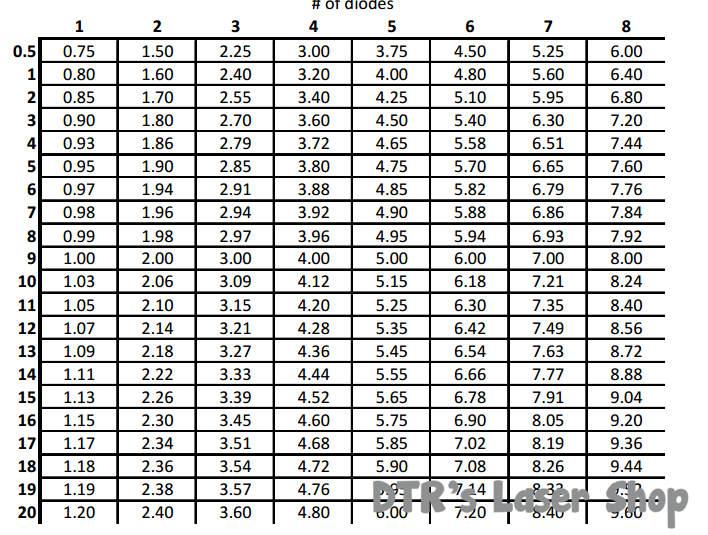- Joined
- Aug 1, 2016
- Messages
- 4
- Points
- 3
Hey all! I'm getting ready to do my first build using a PL520 module from DTR and a C6 host from Gary at SL. I ordered the host with a 220mA driver. I ordered two Nitecore RCR123A batteries to make sure I have enough voltage to operate the driver. (4.2 to 8.4 volts.) At this point I think I'm OK. I also ordered a test load because I want to understand how to use it and test it with the driver from SL. (I know it's a fixed driver, in this case it's just a learning exercise.) I understand that I need to adjust the test load to imitate the voltage drop of the laser diode, which according to the datasheet is Vf=7V.
What's melting my brain is what jumper setting do I use to test a 220mA driver for a diode with a 7 volt operating voltage? Do the jumper settings represent the voltage? Meaning, I'd set the jumper to 7?
Gary was kind enough to answer my questions so I'm confident that I can proceed with the build and be OK, I'm just trying to understand how to use the test load.
Bonus question: What's the relationship between my source voltage (2 RCR123A = 7.4V), driver voltage requirements (4.2 to 8.4) and diode operating voltage (7V)? Does my source voltage need to match the diode voltage regardless of the driver voltage requirements? Could I feed the driver 5.5V and still drive the diode? (Less than the diode Vf but still within the driver range of input V?)
Thanks in advance for the help, it's much appreciated!
~Mark
What's melting my brain is what jumper setting do I use to test a 220mA driver for a diode with a 7 volt operating voltage? Do the jumper settings represent the voltage? Meaning, I'd set the jumper to 7?
Gary was kind enough to answer my questions so I'm confident that I can proceed with the build and be OK, I'm just trying to understand how to use the test load.
Bonus question: What's the relationship between my source voltage (2 RCR123A = 7.4V), driver voltage requirements (4.2 to 8.4) and diode operating voltage (7V)? Does my source voltage need to match the diode voltage regardless of the driver voltage requirements? Could I feed the driver 5.5V and still drive the diode? (Less than the diode Vf but still within the driver range of input V?)
Thanks in advance for the help, it's much appreciated!
~Mark





